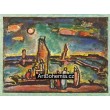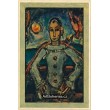Košík
0
x
Produkty
(prázdný)
Žádné díla
Bude determinováno
Dopravné a balné
0 Kč
Celkem
Produkt byl úspěšně přidán do nákupního košíku
Počet
Celkem
0 ks zboží.
1 dílo v košíku.
Za díla:
Doručení a balné:
Bude determinováno
Celkem
Kategorie
- grafiky/tisky
- obrazy
- kresby
- plakáty
- fotografie
- exlibris
- bibliofilie
- knihy/katalogy
- starožitnosti
- sochy/plastiky
- sklo
-
Hnutí
- abstrakce
- art-deco
- čs.avantgarda/moderna
- expresionismus
- fauvismus
- impresionismus
- kubismus
- naivní umění
- op-art
- poetismus
- pop-art
- realismus
- secese
- sociální kritika
- soudobá tvorba
- surrealismus
- světová avantgarda/moderna
- Škola prof. Albína Brunovského
- Škola prof. Zdeňka Sklenáře
- Škola prof.Julia Mařáka - mařákovci
- Žánr
- Zprávy/NEWS
- Doporučujeme
Nová díla
-

Zamilovaný gondoliér
10 406 Kč -

Poryvy
11 374 Kč -

Vír IV
11 374 Kč
-

Sedící na sloupu s dýkou (Ovidius)
871 Kč -20% 1 089 Kč
Hnutí
- abstrakce
- art-deco
- čs.avantgarda/moderna
- expresionismus
- fauvismus
- impresionismus
- kubismus
- naivní umění
- op-art
- poetismus
- pop-art
- realismus
- secese
- sociální kritika
- soudobá tvorba
- surrealismus
- světová avantgarda/moderna
- Škola prof. Albína Brunovského
- Škola prof. Zdeňka Sklenáře
- Škola prof.Julia Mařáka - mařákovci
Žánr
NEJŽÁDANĚJŠÍ UMĚLCI
- Anderle Jiří
- Augustovič Peter
- Benca Igor
- Beneš Karel
- Bím Tomáš
- Born Adolf
- Brun Robert
- Brunovský Albín
- Boštík Václav
- Bouda Cyril
- Bouda Jiří
- Braque Georges
- Brázda Jiří
- Buffet Bernard
- Cézanne Paul
- Čapek Josef
- Čápová Hana
- Dalí Salvador
- Demel Karel
- Dudek Josef
- Dufy Raoul
- Effel Jean
- Felix Karol
- Filla Emil
- Giacometti Alberto
- Grosz George
- Chagall Marc
- Istler Josef
- Janeček Ota
- Jiřincová Ludmila
- Kandinsky Wassily
- Kĺúčik Peter
- Komárek Vladimír
- Kulhánek Oldřich
- Kupka František
- Lada Josef
- Lhoták Kamil
- Matisse Henri
- Miró Joan
- Mucha Alfons
- Muzika František
- Picasso Pablo
- Pileček Jindřich
- Reynek Bohuslav
- Sukdolák Pavel
- Suchánek Vladimír
- Svolinský Karel
- Šíma Josef
- Špála Václav
- Švabinský Max
- Švengsbír Jiří
- Tichý František
- Toulouse-Lautrec Henri de
- Toyen
- Trnka Jiří
- Váchal Josef
- Vik Karel
- Warhol Andy
- Zábranský Vlastimil
- Zoubek Olbram
- Zrzavý Jan
Seznam děl umělce Rouault Georges
Georges Rouault (1871-1958) was born in a working-class suburb of Paris. Encouraged by his grandfather, he began drawing as a child and was apprenticed to a stained-glass maker at the age of fourteen. In his spare time, he attended classes at the École
Georges Rouault (1871-1958) was born in a working-class suburb of Paris. Encouraged by his grandfather, he began drawing as a child and was apprenticed to a stained-glass maker at the age of fourteen. In his spare time, he attended classes at the École Nationale des Arts Décoratifs, and frequented the Louvre. At age twenty, Rouault began studying at the École des Beaux-Arts under Gustave Moreau (1826-98) who also taught Henri Matisse and Albert Marquet. Shortly after Moreau died and bequeathed his estate to the City of Paris, Rouault was made the curator of the new Musée Gustave Moreau.
In 1902 Georges Rouault helped to found the Salon d'Automne where he exhibited his work along with the Fauves and Indépendants, two groups of artists not included in the official Salon of the French Royal Academy. Rouault was thirty-eight when he had his first solo exhibition in Paris. Rouault received major recognition for his work in 1937, when his paintings were displayed in conjunction with the Paris World's Fair.
Rouault, a devout Catholic, painted images of Christ, along with prostitutes, lawyers, judges and clowns as part of a commentary on the corruption of society. He believed in the teaching of the Gospel and stated that his "only ambition is to be able to paint a Christ so moving that those who see Him will be converted."
The art dealer Ambroise Vollard (1865-1939) commissioned Rouault to produce prints for a two volume edition. For this project, entitled Miserere et Guerre, Rouault was to create a hundred images which would appear with text by the poet André Suarès. Rouault started the series in 1914 and continued working on it through World War I and again from 1922 until 1927. Vollard became Rouault's sole agent and employer after 1916. Vollard and his family retained control of the images until 1948, at which time Rouault prevailed in court and then published his collection of prints as a single volume entitled Miserere.
To create this series, the artist had his preliminary drawings photographically transferred onto copper plates using a process known as heliogravure. Rouault then reworked each plate using a variety of intaglio printmaking techniques. The term intaglio means "to cut in" and refers to aquatint, drypoint, and etching processes. Each of these techniques used by Rouault involves incising or engraving a metal plate either chemically or with a drypoint instrument such as an etching needle or burrin. Both aquatinting and etching require use of an acid-resistant material called a ground and an acid bath which pits the surface. In some instances Rouault made as many as fifteen successive impressions or states of a single image before being satisfied.
Many of the themes found in Georges Rouault's paintings are repeated in the Miserere series. In the first part of the series, the sufferings of Christ are interwoven with those of Man. By contrast, the second part of the series entitled Guerre includes more images of death, but ends with the idea of resurrection and Man's salvation through the sacrifice of Christ. Georges Rouault revealed for many the relevance of Christianity during what has been called the "post-Christian" era.
In: http://www.georgetownframeshoppe.com/georges_rouault_biography.html
Zobrazit
In 1902 Georges Rouault helped to found the Salon d'Automne where he exhibited his work along with the Fauves and Indépendants, two groups of artists not included in the official Salon of the French Royal Academy. Rouault was thirty-eight when he had his first solo exhibition in Paris. Rouault received major recognition for his work in 1937, when his paintings were displayed in conjunction with the Paris World's Fair.
Rouault, a devout Catholic, painted images of Christ, along with prostitutes, lawyers, judges and clowns as part of a commentary on the corruption of society. He believed in the teaching of the Gospel and stated that his "only ambition is to be able to paint a Christ so moving that those who see Him will be converted."
The art dealer Ambroise Vollard (1865-1939) commissioned Rouault to produce prints for a two volume edition. For this project, entitled Miserere et Guerre, Rouault was to create a hundred images which would appear with text by the poet André Suarès. Rouault started the series in 1914 and continued working on it through World War I and again from 1922 until 1927. Vollard became Rouault's sole agent and employer after 1916. Vollard and his family retained control of the images until 1948, at which time Rouault prevailed in court and then published his collection of prints as a single volume entitled Miserere.
To create this series, the artist had his preliminary drawings photographically transferred onto copper plates using a process known as heliogravure. Rouault then reworked each plate using a variety of intaglio printmaking techniques. The term intaglio means "to cut in" and refers to aquatint, drypoint, and etching processes. Each of these techniques used by Rouault involves incising or engraving a metal plate either chemically or with a drypoint instrument such as an etching needle or burrin. Both aquatinting and etching require use of an acid-resistant material called a ground and an acid bath which pits the surface. In some instances Rouault made as many as fifteen successive impressions or states of a single image before being satisfied.
Many of the themes found in Georges Rouault's paintings are repeated in the Miserere series. In the first part of the series, the sufferings of Christ are interwoven with those of Man. By contrast, the second part of the series entitled Guerre includes more images of death, but ends with the idea of resurrection and Man's salvation through the sacrifice of Christ. Georges Rouault revealed for many the relevance of Christianity during what has been called the "post-Christian" era.
In: http://www.georgetownframeshoppe.com/georges_rouault_biography.html
Fotografie
 |
Zobrazeno 1 – 3 z 3 položek
Zobrazeno 1 – 3 z 3 položek



